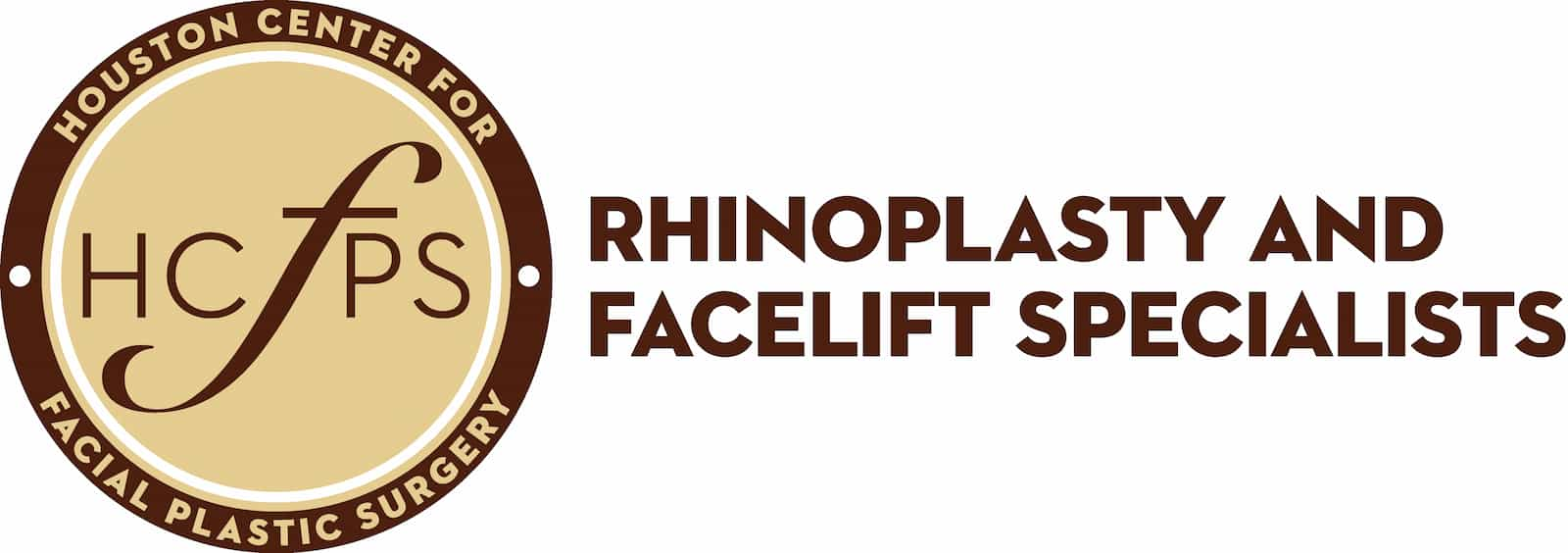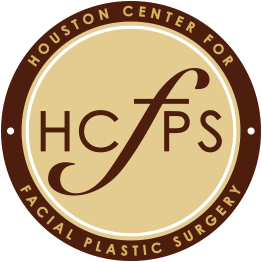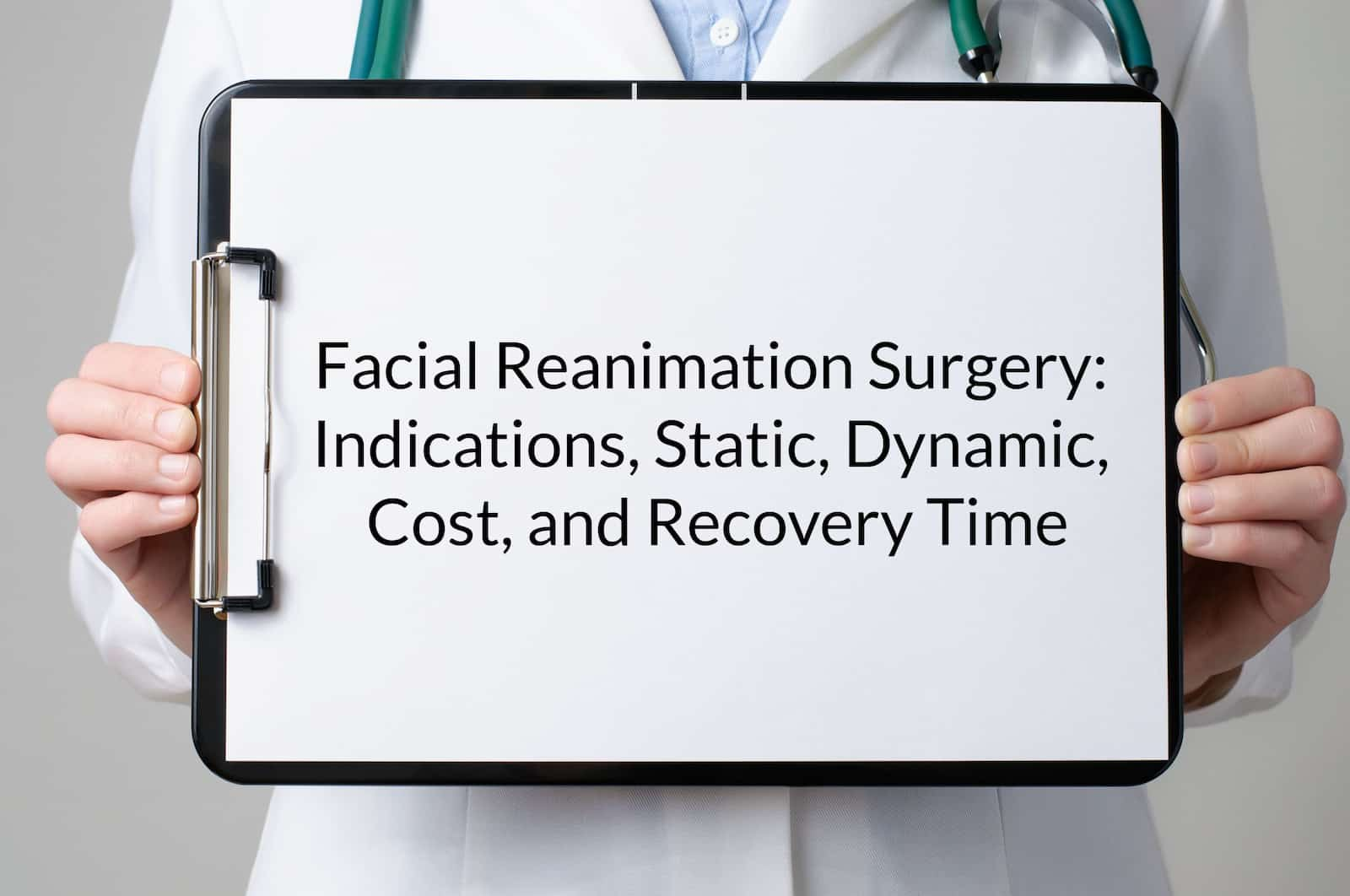Facial reanimation surgery also referred to as smile surgery, is recommended for people who have experienced total or near total loss of the ability to show facial expressions like smiling or shocked expressions. Surgery is performed in one or two stages, up to one year apart, based on the cause of paralysis, areas affected, and the patient's age and medical history.
What Is Facial Reanimation Surgery?
Facial reanimation is a specialized surgical approach to repair a damaged facial nerve or replace a nerve that has become irreversibly damaged, which has caused facial paralysis.
Indications For Reanimation Surgery
Facial reanimation surgery is performed by facial plastic surgeons with extensive knowledge and experience in treating disorders affecting the facial nerves. During your initial appointment, your surgeon will inquire about the nature of the injury that resulted in facial paralysis, how long you have experienced the paralysis, and if you have undergone any previous surgeries or non-surgical treatments like therapy to reverse the damage. If you have copies of photographs or video scans previously performed, your doctor will ask for a copy to review the findings.
Your surgeon will perform a physical examination to evaluate the range of motion and your ability to perform various movements like a natural smile without showing teeth, eyebrow elevation, or eye closure. Though you may experience facial paralysis, you may not be a viable candidate for facial reanimation if you have a severe health condition or physical disability, or you do not meet age requirements.
Types Of Facial Reanimation Surgery
Facial reanimation surgery can involve one or more of the following procedures.
Static Procedures
A static cosmetic procedure is performed to restore a symmetrical look to the face, however, it does not reanimate facial muscles. Static procedures are used to address the eyes as well as the eyebrows and lower face.
A surgeon may address the eyes by implanting a small platinum or gold weight within the upper eyelid to facilitate closing and tightening the lower eyelid simultaneously. Static facial reanimation helps to reduce the feeling of dry eyes and aids in protecting the eye from injury.
To address the eyebrows, the surgeon may perform a brow lift to allow for forehead symmetry as well as improving any visual disturbances caused by a heavy brow.
Static procedures to the lower two-thirds of the face are performed by using tissue from the thigh to create a sling underneath the skin. This allows for symmetry of the face at rest, as well as supporting the nasal base and improving nasal breathing.
Dynamic Rehabilitation
Dynamic facial rehabilitation is a procedure required to restore symmetrical and purposeful facial movements and facial tones. There are multiple options for facial reanimation through
- Nerve grafting: Nerve grafting is performed to restore muscle control by moving a nerve from one area of the body to the face. This procedure is commonly performed by harvesting sensory nerves of the neck or lower leg and using them as a graft between the main trunk of the facial nerve to a distance branch or branches of the nerve.
- Cross Face nerve grafting: The cross face technique is used to treat patients with prolonged or chronic facial paralysis due to nerve damage. A cross facial nerve graft is commonly used when the peripheral branches of a nerve and facial muscles are intact but the main trunk of the nerve is no longer functioning. The cross face grafting technique uses a sensory nerve (sural nerve) from the lower leg, then connects a branch from the unaffected side of the face to the affected side of the face. The goal of this technique to create spontaneous, emotionally provoked movement of the face.
- Nerve transfer or transposition: A nerve transfer is a specialized approach to reinnervating a facial nerve by using a different motor nerve. The masseter (chewing nerve) and hypoglossal (tongue nerve) nerves are commonly used to stimulate facial muscles, allowing for increased facial expressions. These techniques may be used simultaneously to help improve resting facial symmetry as well as creating a more natural smile.
- Local muscle/tendon transfer: When a facial nerve becomes damaged beyond repair, muscles surrounding it may begin to atrophy or waste away, leaving them unable to function. A surgeon will transfer muscles or tendons, commonly the temporalis tendon, to help a person smile in the least invasive way.
- Free muscle transfer: A free muscle transfer is performed in two separate surgical stages to produce synchronous facial movement in patients who have experienced irreversible facial paralysis. The muscle typically used is from the inner thigh (gracilis muscle) which is then connected to the masseter nerve (chewing nerve) to create a natural appearing smile. It requires a surgeon that is highly skilled in microsurgery as it is an intricate procedure.
Request An Appointment For Facial Reanimation Surgery
How Much Does Facial Reanimation Surgery Cost?
The final cost for facial reanimation surgery depends on the patient's insurance coverage, insurance policy, and out-of-pocket deductibles. Without insurance coverage, the procedure can cost several thousand dollars.
Does Insurance Cover Financial Reanimation Surgery?
For a patient deemed eligible for facial reanimation, a claim is submitted to your insurance company to determine how much of the total procedure cost will be covered. Facial reanimation surgery is often covered, in full or partially, by most major insurance policies as it is considered a necessary medical procedure. At Houston Center for Facial Plastic Surgery, we have a team of experts to help you from the initial appointment up until you are fully released for regular activities.
Facial Reanimation Surgery Recovery Time
Surgery for facial reanimation is a serious medical procedure designed to improve a person’s daily living and boost their self-esteem. Without adequate healing time and closely following discharge instructions, you risk improper healing, inflammation, or even infection. Total recovery following facial reanimation surgery is six weeks. Many patients are released one week following surgery to return to light duty work.
When surgery has been completed, you will be monitored in a recovery room for several hours. If your surgeon must perform muscle transfer or another more invasive grafting, you can expect to stay two to three days in the hospital for close monitoring. Upon discharge, you will be sent home with detailed instructions on how to properly care for your incision site, what activities to avoid, and other detailed instructions regarding medication dosages and follow-up appointments.
It can take up to one year to see the full results of facial expressions and a symmetrical smile resulting from facial reanimation surgery. Reversal from nerve damage takes time to see results. Remember, to be patient and follow all discharge instructions carefully to ensure total healing.
Treating Nerve Damage At Houston Center For Facial Plastic Surgery
Our specialists at Houston Center for Facial Plastic Surgery understand the toll a damaged muscle or nerve can have on a person which is why we strive to provide the most advanced approach and technique to safely treat you. Though many people think plastic surgery is all elective procedures not covered by insurance, most insurance policies view facial reanimation as a medically necessary procedure to be covered under medical insurance benefits. Our team will assist you every step of the way and submit all medical claims to your insurance carrier to determine the estimated out-of-pocket cost.
When it comes to facial plastic surgery, patients seek out the best surgeons, whether they must travel hundreds of miles or find a surgeon close to home. Dr. DeBusk is one of the few facial plastic surgeons in the country that offers the entire gamut of facial reanimation procedures from static slings to microvascular-free flaps. People travel near and far to seek care from Houston Center for Facial Plastic Surgery with Dr. DeBusk’s keen attention to detail and his listening ear to each patient’s concerns.





